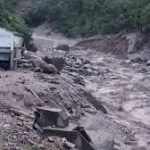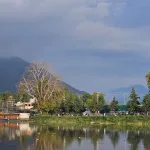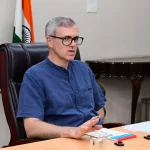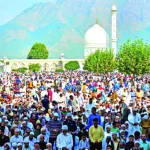Srinagar, Sept 05: The Central Water Commission (CWC) has flagged 57 glacial lakes in Jammu & Kashmir for “vigorous monitoring,” warning that accelerated expansion of these water bodies could trigger sudden floods in already vulnerable valleys. This caution comes as part of a broader Himalayan trend observed in the CWC’s latest monthly report for June 2025.
Across India, glacial lakes are rapidly expanding, rising from 1,917 hectares in 2011 to 2,508 hectares by June 2025, marking a 30.8% increase in area. Of the 681 lakes mapped under the Glacial Lake Atlas 2023, 432 showed an increase in water spread during June alone.
Among the states, Arunachal Pradesh reported the most expanding lakes (197), followed by Ladakh (120) and J&K (57), Sikkim (47), with smaller numbers in Himachal Pradesh (6), and Uttarakhand (5).
The broader Himalayan region witnessed 1,435 glacial lakes expanding, 1,008 contracting, 108 remaining stable, while 292 couldn’t be analysed due to remote-sensing limitations.
Describing these changes as “among the most recognisable and dynamic impacts of climate warming,” the CWC urged immediate action: real-time lake monitoring, satellite-based alert systems, and robust early-warning mechanisms for communities downstream.
This alert arrives amid ongoing monsoon distress in J&K, where repeated heavy rains have pushed rivers to near-critical levels and activated emergency protocols across multiple districts.
The India Meteorological Department’s late August and early September red alerts for districts including Poonch, Rajouri, Reasi, Jammu, Ramban, Udhampur, Samba, Kathua, Doda and Kishtwar cited high risk of cloudbursts, flash floods, landslides and road breaches conditions under which saturated slopes and encroached floodplains sharply raise cascading risk.
Unlike earlier advisories, the CWC’s recommendations read as operational including deployment of lake-level sensors and automatic weather stations in critical high-altitude basins, integration of satellite-based change detection into state disaster dashboards, and community-facing early-warning systems capable of reaching pilgrim routes, hydropower sites and settlements “within minutes.”
The report has also pressed for closer coordination between the Ministry of Jal Shakti, the National Disaster Management Authority (NDMA) and state disaster management authorities, while underlining transboundary cooperation with Nepal, Bhutan and China as “a practical necessity” since many expanding lakes feed cross-border catchments draining into Indian rivers.
The NDMA’s October 2020 guidelines on Glacial Lake Outburst Floods (GLOFs), called for pre-emptive risk classification of lakes, siphoning, controlled breaching and spillway stabilisation where feasible, alongside non-structural measures such as SMS alerts and valley-specific mock drills have been cited as a ready template that “gains renewed urgency this monsoon.”






